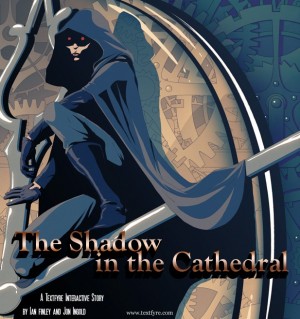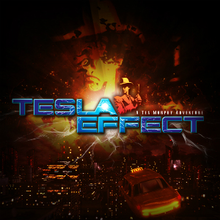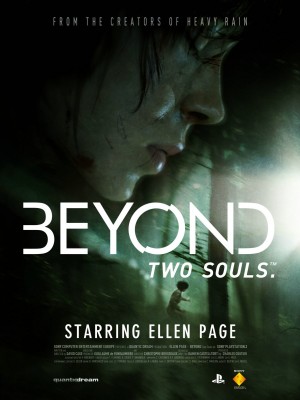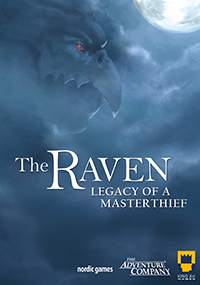Adrian Chmielarz - The Vanishing of Ethan Carter interview

Most people who recognize the name of Polish designer Adrian Chmielarz probably associate the co-founder of People Can Fly with the high-profile action games Painkiller, Bulletstorm, and Gears of War: Judgment. Far fewer may be aware that his work on the soon-to-be-released indie adventure game The Vanishing of Ethan Carter actually is a return to his adventure game roots, though with a very forward-thinking, ambitious design. The goal of Adrian and his new studio The Astronauts is nothing less than a unique experience that tries to evolve interactive storytelling in exciting ways. Needless to say, this unusual project caught our attention and motivated us to get hold of the mastermind behind this highly-anticipated project and discuss all-things-Ethan Carter.
Ingmar Böke: Hello Adrian. Not all of our readers may know your name just yet, so please introduce yourself, and give us an idea of your background in this industry.
 |
Adrian Chmielarz |
Adrian Chmielarz: I’m Adrian Chmielarz, a game designer, a co-founder of The Astronauts, and previously a co-founder of People Can Fly. If people know me, then most of the time it’s from that last studio – I‘ve worked on Painkiller, Bulletstorm and Gears of War: Judgment there.
Not exactly adventure games, I know. But my first projects – The Mystery of the Statuette, Teenagent, and The Prince and the Coward – were all adventure games. So the game I am making right now is in a way a journey back to my roots.
Ingmar: Someone who worked on various acclaimed AAA games now doing a comparably smaller indie project is quite an interesting story. How did this happen and what’s the aspiration of The Astronauts?
Adrian: We believe that games are a very potent story-telling medium, and we hope to be a part of the movement trying to evolve story-telling in games. It’s very hard to experiment and take new directions in AAA, so we’ve established a new studio where we can take more risks and be entirely responsible – for good and for bad – for our work.
The Vanishing of Ethan Carter: Welcome to Red Creek Valley trailer
Ingmar: What pros and cons – compared to working on an AAA game for a big publisher – have you encountered so far?
Adrian: As an independent developer we can make a game that an AAA publisher would never greenlight. Because the story is too complex, or maybe the themes are too risky, or possibly the scope is too small – take your pick. So it’s great to be on our very own and be able to make games without having to consult the design with the marketing department.
Of course, there are cons too. For example, even though we are veterans in game development, the studio itself is new and is yet to prove itself. Especially considering that our last three games were all shooters. So we’ve yet to earn the public’s trust, and that of course makes the marketing much harder.
Ingmar: Please give us an idea of the story behind The Vanishing of Ethan Carter.
Adrian: You are Paul Prospero, a private detective with a certain supernatural power of being able to see the final memories of the dead. One day you get a letter from a boy named Ethan Carter and realize that he is a real danger. When you arrive in Red Creek Valley, Ethan’s home, the boy is nowhere to be found. What you do find, though, is a corpse. It’s not Ethan, but it’s clear that he is involved somehow. And that is how your search for Ethan Carter begins, and this is where I probably should stop talking, the game being a mystery and all.
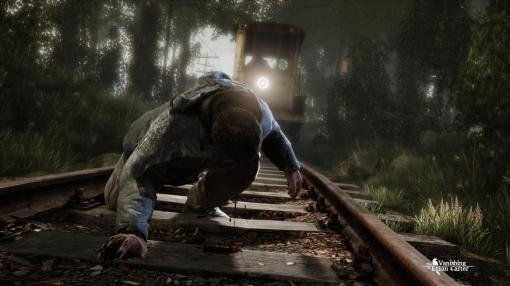
Ingmar: How does interactivity work in Ethan Carter? Please give us an idea of how the gameplay works.
Adrian: There are two major gameplay layers in the game.
The first is solving the mystery of Ethan’s disappearance by investigating clues – even if finding them means you have to reach for the memories of the corpses you find. But in order to be able to communicate with the dead, first you need to restore the crime scene to what it was right before their death. An example is to move a railcar back to the place where it stood originally – assuming, of course, you figured out where that original spot is.
The second layer is the one we have not really talked about yet. But there are… certain places in the valley that are different, and anything can happen there. Solving the mystery of these places is something that helps you understand the larger picture of the events in Red Creek Valley.
Ingmar: Ethan Carter seems like a very unusual and unique sort of adventure. How would you say that it is different from other games within this genre?
Adrian: It’s different enough to cause us identity issues. Gamers love to be able to put a clear label on something. But is Ethan Carter an adventure game or is it an explorer? Is it horror or is it crime? And so on and so forth. On our side, we’ve finally settled on calling it a “first-person mystery”.
The game is different and it’s not. I know, yes, that does not explain much, does it? But in short, our game is something that anyone who plays video games should understand immediately, while at the same time they will see that we have done some new things they hopefully have never seen before.
We had a few goals when we made Ethan Carter: make a game for people who love video games but have been playing them for so long that lately they have a problem finding anything worth their time and money, try to evolve storytelling in games by merging story and gameplay, etc. But one of the goals was to try to evoke the feeling of excitement of experiencing something fresh and special, like the first time you played a video game. It sounds too ambitious and I am pretty sure it’s not quite possible to achieve, but “Shoot for the moon and even if you miss you'll land among the stars”, right?
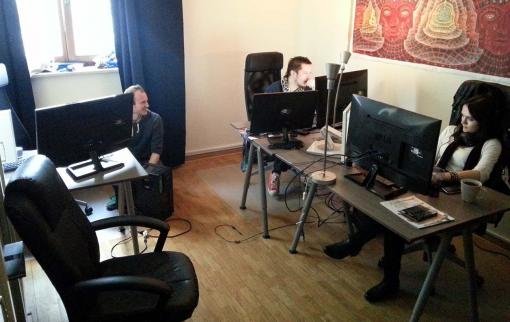
The Astronauts hard at work
Ingmar: Does a strong connection between story and gameplay automatically result in less gameplay challenge, or do you feel that does not necessarily have to be the case? How does Ethan Carter handle this issue?
Adrian: It depends on the design. You can have a game that is easy to finish, like The Walking Dead. The challenges of that game are not about proving your manual or puzzle-solving skills. And you can have a game that’s nearly impossible to finish on your own, like Antichamber. Both can be considered adventure games, but both could not be more different.
In our case, we’ve decided to make a game that demands some mental investment from the player. There’s no tutorial, no hints, no journal, and no objective markers. You’re on your own. It’s not a hardcore game, but it assumes it’s being played by someone who already has some experience with video games.
Ingmar: At first glance your previous games may not have that much in common with Ethan Carter. Why did you choose first-person once more, and in what way did your prior experiences with first-person action games have something to do with that decision?
Adrian: Third-person helps to focus on the story of the main character. First-person helps you to feel like you are teleported to an alternate universe. That sense of presence is extremely important to us, so we opted for the first-person view. We give the player a lot of freedom in how they go about looking for Ethan, and we felt that first-person perspective helps emphasize that freedom.
Ingmar: The photogrammetry technique that you’re using in Ethan Carter is quite impressive. Please explain that approach. How does it work and what’s the idea behind it?
Adrian: The idea is simple, but that’s exactly why it feels like magic sometimes. You take a couple dozen photos of an object, put it into special software and it spits out a fully textured, photorealistic 3D model.
Of course, things are “a bit” more complicated than this, and there’s a lot of work involved into getting game-ready results, but still, magic!
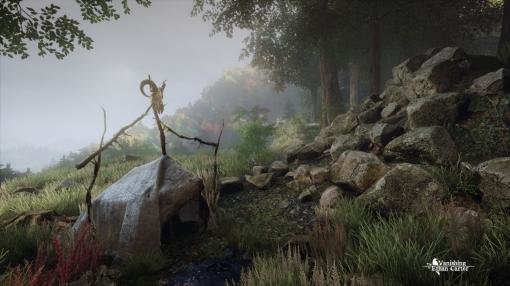
Ingmar: Choice and consequence is an expression we hear a lot these days. What’s your take on the subject? Do you have an ideal version of this system, and does it have any relevance for your game?
Adrian: You can tackle C&C in many ways. Even if you have a linear story without any branching, you can still allow the players to pick up the pieces in non-linear order. So the way the players go about exploring your world is their choice. Additionally, you can have layers of the story itself, and the way the player interacts with the game affects the interpretation: two players can have a different understanding of the story even if they saw exactly the same things, just in a different order.
The above is a part of the solution we use in our game. There’s more, but I think we should return to such analysis only after the game is released and experienced.
Ingmar: Correct me if I’m wrong, but it seems to me that Ethan Carter takes a very psychological approach to horror. Tell us a bit about how the horror elements work in the game.
Adrian: Our game is inspired by weird fiction – writers like Blackwood or Lovecraft – so it’s a different type of horror to what games usually offer. It’s not about jump scares but, as our writers call it, “clumsy unease”. Of course, we’ve had a couple of good adventure games that also relied on such mood, so we’re not pioneers here, but I think this type of horror is still rare.
What I personally like about this approach is that it relies a lot on the player’s imagination. And nothing can ever compare to that.
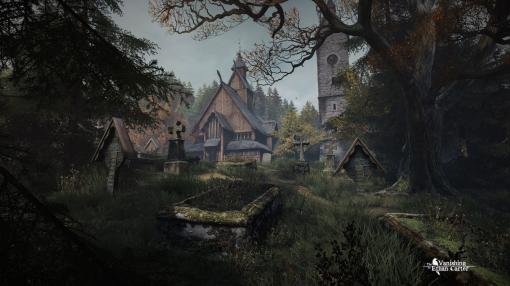
Ingmar: Which other games come to your mind when you think of effective horror?
Adrian: Amnesia is certainly very effective. I loved the mood of the first hour. And when the monster appeared, that was too much for me and I literally had to stop playing. So yes, they handle primal fear extremely well.
From older games, I loved Gabriel Knight. It’s a soft kind of horror, and I am not sure if the game survived the passage of time, but when it first came out I just loved wallowing in its atmosphere.
This may come as a surprise, but I also like some HOPA (hidden object puzzle adventure) games. I think Phantasmat is fantastic, one of the best games in the genre, and I loved most of the first Enigmatis.
Ingmar: Which story-based games in general left a lasting impression on you from the last few years?
Adrian: To the Moon is one such game. What blows my mind is its execution: the story is so gripping that no one cares it’s probably the most linear adventure game in the world.
But there’s also The Wolf Among Us. Gone Home. Blackwell Epiphany. The Last of Us. The Stanley Parable. Metro 2033. The Last Door. And there are games I am dying to play as soon as possible, like SOMA, Everybody’s Gone to the Rapture, and Firewatch.
All these games have one and only one common element: they’re focused on a narrative understood as a mix of story-experiencing and gameplay. But almost everything else – visual style, gameplay mechanics, etc. – is different. And that’s awesome.
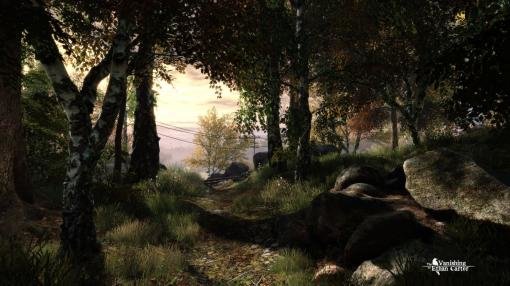
Ingmar: The work of David Cage is a very popular subject on your blog. How do you judge Cage’s role in this industry? Which aspects of his approach do you agree with, and which aspects do you disagree with?
Adrian: David is a hero I love to disagree with.
Fahrenheit, with one of the greatest game openings of all time, was an eye-opener to me. Wait, you can bend UI to gameplay, and gameplay to the core emotional experience you’re trying to sell? It all sounds obvious today, but was not that obvious in 2005. At least not to me.
So I think David is a visionary, and a man our industry owes a lot to.
But I would love to see what David Cage could do if he was not so bent on being the only captain on his projects’ ship and partnered with some great writers and designers to elevate his core ideas.
Ingmar: Do you believe there will come a point in time when this medium of interactive storytelling might be as “normal” and culturally accepted as, say, TV or movies? Any idea of the road that could lead to that point?
Adrian: The road is very simple: make better games.
No, seriously.
Commented gameplay video
Ingmar: Once Ethan Carter has been released and you start reading the first comments by players and press, what final verdict would make the creative mind behind the game most happy and proud?
Adrian: Seeing people share their feelings – hopefully positive ones – about the game with others. Speculating. Debating. Digging deeper.
Ingmar: When can we expect the release of The Vanishing of Ethan Carter, and on which platforms?
Adrian: PC version comes out on September 25th. PS4 version comes out in early 2015.
Ingmar: Thanks a lot for doing this interview, Adrian. Much appreciated. Good luck with the release of the game!
Adrian: Thanks for having me!





